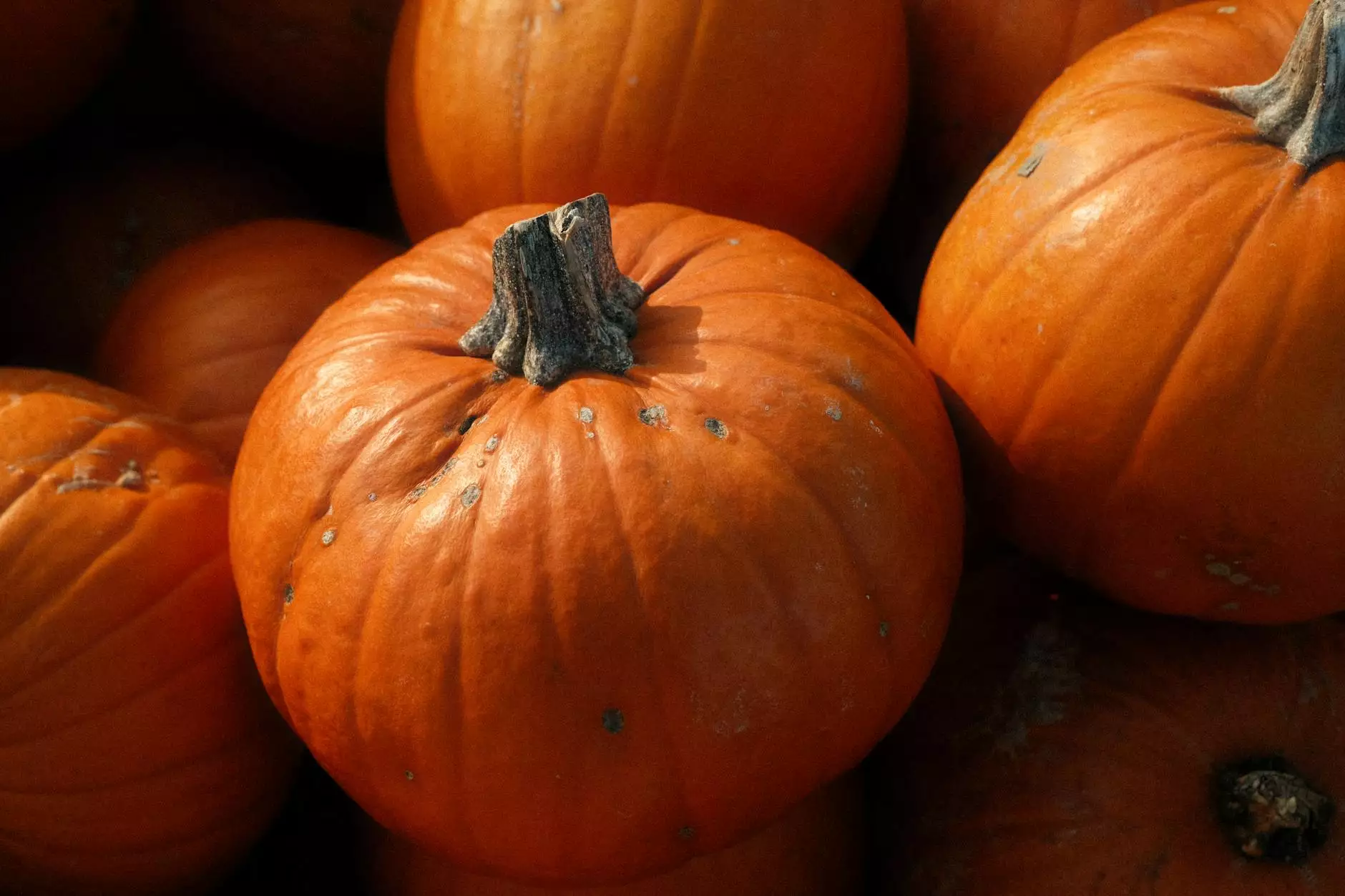The Ultimate Guide to Growing Pumpkins: Tips for Gardeners

Pumpkins are more than just a symbol of fall; they are a rewarding garden crop that can be both fun and incredibly beneficial for gardeners. Whether you're a novice or a seasoned gardener, learning how to grow pumpkins can enhance your gardening skills and yield a remarkable harvest. This guide will delve deep into the essentials of pumpkin cultivation so that you can achieve thriving pumpkins in your garden.
Understanding the Charm of Pumpkins
The pumpkin is a member of the Cucurbitaceae family, which includes gourds and squash. Their vibrant orange color, unique shape, and versatility make them a favorite among gardeners and chefs alike. Beyond their aesthetic appeal, pumpkins provide nutritional benefits, packed with vitamins and fiber. Also, growing pumpkins can be a rewarding experience that teaches patience and care.
Choosing the Right Pumpkin Variety
Before you begin your gardening journey, consider which variety of pumpkin suits your needs:
- Jack-o'-Lantern: The classic favorite for Halloween carving.
- Sugar Pumpkins: Ideal for pies and cooking.
- Giant Pumpkins: Perfect for competitions and showcasing skills.
- White Pumpkins: Aesthetic choice for decorative purposes.
Choosing the right variety depends on your purpose—be it cooking, decoration, or competition. Make sure you select seeds that thrive in your climate.
Preparing the Soil for Pumpkin Cultivation
Soil preparation is critical in setting a strong foundation for pumpkin growth. Here are the essential steps for optimal soil preparation:
- Assess Soil Quality: Conduct a soil test to determine pH and nutrient levels. Pumpkins prefer a pH between 6.0 and 6.8.
- Enrich the Soil: Add organic matter such as compost or well-rotted manure to improve drainage and nutrient availability.
- Till the Soil: Work the soil to a depth of about 12 inches to aerate it and incorporate organic matter.
- Remove Weeds and Debris: Clear the area of any weeds and old plant material to minimize competition for nutrients.
When and How to Plant Pumpkins
The timing of planting pumpkins is crucial. Generally, you should plant your seeds after the last frost date and when the soil temperature reaches at least 70°F (21°C).
Direct Seeding
For most gardeners, direct seeding is an effective method:
- Plant seeds about 1 inch deep.
- Space seeds 4-6 feet apart to allow room for sprawling vines.
- Create hills or mounds to improve drainage and encourage better growth.
Transplanting Seedlings
If you start seeds indoors, transplant them outdoors after they have developed 2-3 true leaves and are hardened off.
Caring for Your Pumpkin Plants
Caring for your pumpkin plants involves several key practices:
Watering
Pumpkins require ample moisture, especially during fruit development. Water deeply at least once a week, adapting to weather conditions:
- Add mulch around the plants to retain soil moisture.
- Avoid overhead watering to reduce disease risk.
Fertilization
Fertilize your pumpkin plants using a balanced fertilizer high in phosphorus and potassium, which are crucial for flowering and fruiting.
Pest and Disease Management
Pumpkin plants can be affected by various pests and diseases. Keep a close eye and employ the following strategies:
- Inspection: Regularly check for aphids, cucumber beetles, and squash bugs.
- Neem Oil: Use neem oil as a natural pest deterrent.
- Crop Rotation: Rotate your pumpkin crops yearly to prevent soil-borne diseases.
Harvesting Your Pumpkins
The harvesting stage is the most exciting part of growing pumpkins. Here’s how to determine the perfect time to harvest:
- Look for a consistent deep orange color.
- Ensure the skin is hard and cannot be easily punctured with your fingernail.
- Check that the leaves have started to die back as this is an indicator of ripeness.
Use a sharp knife to cut the pumpkin from the vine, leaving a few inches of stem attached.
Storing Pumpkins Properly
To extend the shelf life of your harvested pumpkins, store them in a cool, dry place with good airflow. Avoid exposure to direct sunlight, which can lead to spoilage.
Utilizing Your Pumpkin Harvest
After your hard work, it’s time to enjoy the fruits of your labor! Here are some wonderful ways to use your pumpkins:
- Cooking: From soups to pies, the culinary uses of pumpkins are endless.
- Baking: Incorporate pureed pumpkin into breads, muffins, and cakes.
- Decorating: Use your pumpkin harvest for autumn decor or Halloween festivities.
- Seeds: Don’t discard the seeds! Roast them as a healthy snack.
The Benefits of Growing Pumpkins
Engaging in pumpkin cultivation offers numerous benefits:
- Skill Development: Enhances your gardening abilities and knowledge.
- Physical Activity: Gardening is a great way to stay active and healthy.
- Community Engagement: Share your pumpkins with friends, family, or local food banks.
- Environmental Impact: Contributes to local biodiversity and sustainability.
Conclusion
Growing pumpkins can be a fulfilling experience for any gardener. With this extensive guide, you’re now equipped with the essential knowledge to cultivate your pumpkin patch successfully. Remember that patience and attention to detail are the keys to a bountiful harvest. So gather your seeds, prepare your soil, and embark on the rewarding journey of pumpkin gardening!
Additional Resources
For further reading and resources, explore the following:
- Pumpkins.co.uk
- Gardeners World - How to Grow Pumpkins
- Royal Horticultural Society









